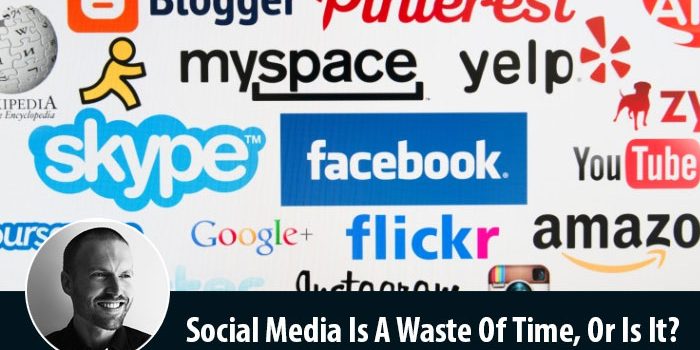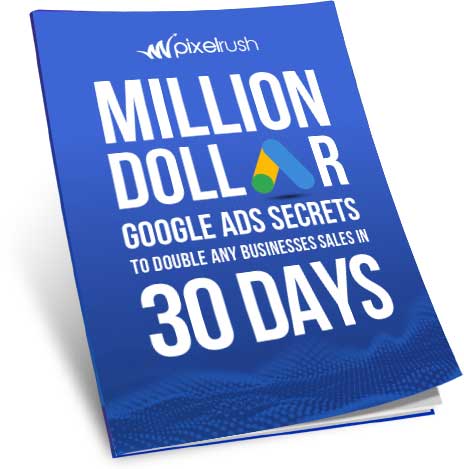I’m frequently visiting the Flying Solo business forums and interacting with businesses of all industries and sizes. One of the most common questions posted is about the benefits of social media and whether it’s one giant waste of time? In fact recently one entry highlighted that 95% of social media posts produced zero engagement.So with that being said should businesses be investing their time if the engagement is little to none?
The quick answer is yes! If you’re basing the performance of social media on the amount of engagement you’re receiving, or lack thereof, then you’re doing it wrong. I speak to many businesses and it’s safe to say that I never hear any of them tell me that the ‘100 Likes’ they received for the month was able to pay their bills.
“Byron, I got 100 Likes this week and because of that I was able to pay my mortgage payments”
Nuh uh, it doesn’t work that way. Social Media isn’t the problem however, it’s the way business are using it! Here are some common scenarios:
- I’ve read that social media is a good thing, I better start using it.
- Let’s build a Facebook page and post funny memes and images of cats and coffee.
- I paid $100 dollars and received 1000 Likes, ‘YAY’
- I promoted my post and received 10 Likes and 3 Shares.
- I spend all day on Facebook and I’m not receiving anymore followers.
This might go on for three months before the owner throws their hands in the air “I’ve had enough, this social media is a complete waste of time” and if you fit into those examples then you’d have to say that you’re correct. Ask yourself “What was the return for my investment of my time and money?” and in most cases you’ll draw a blank look.
If you’re determining the performance of Social Media based on the amount of Likes, Tweets, Hearts or anything else you’ll never understand the benefits. It’s time to start tracking and measuring your efforts, the data doesn’t lie.
How To Use Social Media For Business
Publish content on your website first
Social Media is a method for broadcasting content to a target audience of followers, it doesn’t generate sales by default. Where do sales and leads generally occur? That’s right, on your website of course, so it makes sense that your aim should always be to bring traffic back to your website where the conversion can occur.
Your aim should be to develop content on your website, first and foremost, such as written, graphical, audio or video based content. When, and only when, the content is ready post it to social media. If you’re uploading content directly to the social media platform then the content will be viewed and forgotten, it expires and has no benefit without a link back to your website. You’ve been working hard to improve conversions on your website so you want to target your audience through social platforms and bring them to your website where a strong ‘call to action’ will convince visitors to invest in your services.
Track Your Content Performance
Each piece of content should be tracked and measured so that you can understand exactly where your traffic is coming from and which content and platform converts best for your business. Only then will you be able to understand your return on investment. Rather than spending hours upon hours “socialising” on social media your time is better spent:
- Creating content for your website
- Developing your website as the industry authority
- Becoming the “go to” source for information for your target audience.
Then all you need to do is spend thirty minutes of your time pushing content to each platform, but is that all you need to do however?
Unfortunately not! On each platform it’s critical to track each piece of content individually through what’s called UTM. UTM stands for Urchin Traffic Monitor which doesn’t really matter for todays tutorial but if I don’t say so then somebody will ask. UTM allows you to generate unique links to your content which allow you to track where exactly where the traffic is coming from and what it does when it gets to your website.
Without getting too technical, how do you use it? The easiest way to get started is to use the Google URL Builder. That’s a blog post for another day however.
Configure Goals For Your Website
I know I bang on about configuring goals and conversions in Google Analytics but unfortunately that is the reality. Again, the benefit of configuring goals on your website is that it allows you to understand where your sales, leads and conversions are coming from.
…”but I know when I get an email”..
I know you do, we all know that, but you won’t always know exactly where it’s come from. This kind of information is a clear indication of where your should invest more of your time.
When you combine this with Social Media content marketing using UTM urls you begin to see the power of what you’re doing. You’ll be able to understand
- Which platform sent you traffic
- The content that delivered the visitor
- The percentage of visitors that convert into business for each piece of content and platform.
Spread Your Voice
So, which platform should you put your content? Honestly?
ALL OF THEM!
Gary Vaynerchuk, author of Crush IT, talks about how your audience isn’t on just one platform, it’s on all of them. Now before I get shot down in flames it’s important to note that being on all of them might take significant time out of your day so focus on the major ones first and be consistent.
Different platforms will convert better for different businesses and content. If you’ve got highly visual content, such as photography, then platforms like instagram, pinterest and Facebook might work better. If your content is related to financial news then it might have better results on LinkedIn, Reddit and Twitter.
Your goal should be to spread your content to as many platforms, in the least amount of time, while ensuring you track each piece of content using the methods above. If you have thirty minutes in you day for Social Media then it makes sense to put it on as many platforms as possible rather than just a set number. Experiment, track and measure and you’ll soon identify the sources that are more worthy of your time.
Tools such as buffer and hootsuite can assist you with syndicating content across multiple platforms but be wary of the UTM urls they create and make sure it doesn’t mess up your hard work.
Automate Your Delivery
Where possible your aim should be to automate your content on social platforms. A great example of this might be to repost your older content once every three months for example, it doesn’t make sense to only post the content once. Reuse your old content to ensure that you’re business is always visible in feeds that are relevant to your audience.
This is possible using WordPress schedule plugins, Buffer and other social media management tools. Automation can quickly go pear-shaped if you don’t keep control and you need to make sure you’re not just blasting content and spamming your user feeds. I’d stick to no more than 2-4 posts a day in the most critical times for your audience and make sure you don’t repost content so your audience becomes tired of the same old stuff.
When the automation is place you can spend more of your time thanking and interacting with those that have engaged with your content.
How Not To Use Social Media For Business
To finish off I thought I’d post about some things that businesses shouldn’t worry about when using Social Media.
- Engagement metrics such as ‘Likes’, ‘Follows’ and ‘Retweets’ as a determination of social media success.
- Promoting your page or posts without goals for your traffic.
- Creating content without considering how to measure, track and convert engagement.
- Creating content that doesn’t link back to your website.
- Spending hours on social media interacting with random people.
- Worrying about the number of likes or followers your page has.
- Posting content that is not relevant to your business.
We hope this helps you reassess your social media strategy and you can use it to make clearer decisions about the effectiveness of your time and platforms. Social Media at the end of the day is an amazing way to diversify your traffic from Google and other search engines so the decision to not use it doesn’t use common sense. If you need assistance with configuring your social media platforms and developing a strategy then contact us about our online marketing services.


